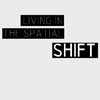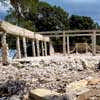Ephemerality and Architecture Competition, MOINOPOLIS Mannheim, Germany
Ephemerality and Architecture : Call for Proposals
MOINOPOLIS Call for Proposals
22 Oct 2012
Ephemerality and Architecture
Call for Proposals, Mannheim, Germany
MOINOPOLIS is going into the next round.
The issue 2 is called EPHEMERALITY AND ARCHITECTURE.
Call for Paper, Mannheim, Germany
15 Jan 2013 – submission deadline
Ephemerality and Architecture
The historical concept of architecture as described by Vitruvius in De architectura identifies ‘durability’ as one of the three principles for good buildings. The term itself derives etymologically from the Ancient Greek word architékton. Here, the ambiguous word techné can be described as art, technology or tectonics, the science of structure, which implies ideas of weight, stability and durability.
Conversely, when we look at certain trends in architecture – for instance at the last Architectural Biennale in Venice curated by Kazuyo Sejima, it is striking that many of the exhibited projects – Junya Ishigami’s “Architecture as air”, Raumlaborberlin’s “Kitchen Monument, The Generator”, “Cloudscapes” from Transsolar, or Olafur Eliasson’s “Your split second house” to name a few, are dealing with the absence of physical matter; with qualities of airiness and ephemerality.
In Les objets singuliers. Architecture et philosophie, Jean Nouvel explains in dialogue with Jean Baudrillard how the search for limits in architecture has shifted discussion of the aesthetics of architecture from the solid and substantial to the permeable and de-materialised.
More recently, the architectural profession finds itself in a condition of deep recession and, according to market forces, architects are able to build less. As a result, the practise has shifted towards projects of more temporary, transient or non-conventional building forms. This has proved to be a new, experimental playground for architects – an opportunity to re-invent their profession.
Have market forces encouraged this shift towards ephemerality or is it a natural tendency of architecture? Does ephemerality in architecture depend on new technologies or are we creating illusions through non-physical experiences in order to imitate the digital? What social conditions, if any, are being represented through an ephemeral architecture? Lastly, what might the consequences of this phenomenon for our society and culture be?
The second issue of MOINOPOLIS wants to approach the question of ephemerality in architecture in a multi-dsiciplinary way. We are interested in hearing your positions, arguments and critiques that deal with these questions.
Submissions should engage critically with topic and may take the form of speculative papers, experimental projects, insights, images, interviews and manifestos.
PARTICIPATION
The participation is open to contributors from a wide range of disciplines such as architects, urbanists, sociologists, designers and any related fields.
International professionals, young academics as well as students and creatives in general are invited to participate as individuals or in groups. Contributions must consist of unpublished material.
SUBMISSION
Participants should submit their contribution digitally by using the online submission form.
Contributions for issue 2/2012 can be submitted until 15th January 2013.
The official language is English.
For more information visit www.moinopolis.org
MOINOPOLIS
The international laboratory of thoughts on spatial matters operates as an exchange platform. It explores contemporary issues related to society, culture, art, new technologies, urbanism and architecture and initiates new impulses for discussion by bringing together a diversity of creatives and researchers throughout various disciplines.
24 Feb 2012
Living in the Spacial Shift
Call for Proposals, Mannheim, Germany
30 Apr 2012 24:00 (GMT) – submission deadline

image from design contest organisers
MOINOPOLIS is an international laboratory of thoughts on spatial matters and operates as an exchange platform. It explores contemporary issues related to society, culture, art, new technologies, urbanism and architecture and initiates new impulses for discussion by bringing together a diversity of creatives and researchers throughout various disciplines.
ISSUE 1/2012 – SPACE & TIME
The actual topic has the aim to examine the multifaceted opportunities and risks associated with the paradigmatic shift in the spatial perception, its architectural appearance and its consequences for our every day life.
LIVING IN THE SPATIAL SHIFT
The spatial and universal understanding has ever been the basis for architectural understanding and practice. The new configuration of spatial parameters induced by a new logic of the proceeding worldwide, network based technology initiates the rethinking of spatial matters as well as the conditioning of adequate models and concepts.
How can we as planners and thinkers react to these radical but silent developments? What are the advantages and disadvantages of this space theory? Is it contradictory to the nature of architecture or does it broaden its understanding? If everything is relational and never in a fixed position, what type of orientation do we need? What role will this shift play in the development of society and culture?
MOINOPOLIS is striving for significant reflections to “Living in the spatial shift” which critically appraise, sample and discuss the topic. The platform is open to project- or research-related contributions as conclusive papers, strong images, or even manifestos.
PARTICIPATION
The participation is open to contributors from a wide range of disciplines such as architects, urbanists, sociologists, designers and any related fields. International professionals, young academics as well as students and creatives in general are invited to participate as individuals or in groups.
Selected contributions will be published online and will be part of the yearbook publication as printed edition bringing together all positions of the laboratory. Furthermore, outstanding contributions will be honoured with an award.
SUBMISSION
Participants should submit their contribution digitally by using the online submission form. Contributions can be submitted until 30th April 2012 (hours 24:00 Greenwich Time). The official language is English.
All the contributions will be appraised according to their holistic understanding, clarity of idea and visionary potential.
For more information visit www.moinopolis.org
Architecture Competitions – Selection
San Pardo Architecture Competition, Matera, Italy

image from design contest organisers
Nemesis Group Architecture Competition
Article 25 Research Architecture Competition, Haiti

photo by Wayne Rowe, © outreach-international.org
Article 25 Research Architecture Competition
Comments for the MOINOPOLIS – Ephemerality and Architecture Call for Proposals page welcome




